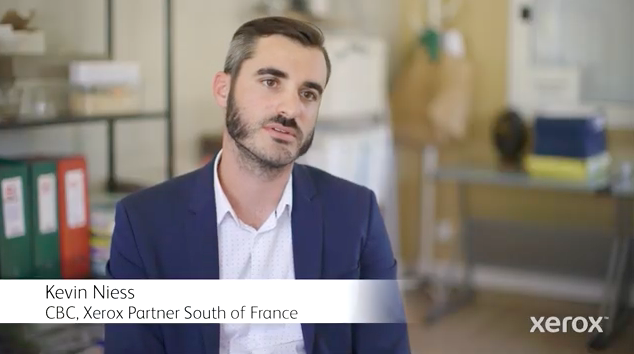The following appears on huffingtonpost.com
As we kick off 2014, I am starting the New Year with an interview series, which will provide an overview of the cybersecurity industry. I spoke with Vice President and Client Executive at Xerox, Chuck Brooks, discussing various components of the cybersecurity market. Xerox is a $22 billion corporation and is one of the largest holders of patents on the globe. In his role, Chuck often writes and speaks on evolving technologies, cybersecurity, public/private sector collaboration, and using social media for government.
 Chuck has served as the first Director of Legislative Affairs at the Science & Technology Directorate at the Department of Homeland Security. He’s also served in several senior executive roles in the corporate world, he was a member of the Adjunct Faculty at The Johns Hopkins University, and served as a Senior Advisor to the late Senator Arlen Specter on national security and foreign affairs issues. Chuck’s educational background includes an M.A. from the University of Chicago and a B.A. from DePauw University. He has also studied at The Hague Academy of International Law in the Netherlands.
Chuck has served as the first Director of Legislative Affairs at the Science & Technology Directorate at the Department of Homeland Security. He’s also served in several senior executive roles in the corporate world, he was a member of the Adjunct Faculty at The Johns Hopkins University, and served as a Senior Advisor to the late Senator Arlen Specter on national security and foreign affairs issues. Chuck’s educational background includes an M.A. from the University of Chicago and a B.A. from DePauw University. He has also studied at The Hague Academy of International Law in the Netherlands.
Specifically, in this interview, we examine cybersecurity development and research.
Why is research and development into cyber security technologies so important today?
 We are a connected world, and the urgency of cybersecurity research and development is directly related to the rapid changes in the information technology landscape. Since 2002, the capabilities and connectivity of cyber devices and communications has grown exponentially. So have the cyber intrusions and threats from malware and hackers, requiring restructuring of priorities and missions. The cyber threat reaches far beyond Al Qaeda, and includes various criminal enterprises and adversarial nation states. As the sophistication of the threats grows, we must be able to continually counteract them. R & D investments also helps address the cybersecurity skills gap by training more professionals to help control risk in the increasingly complex digital landscape.
We are a connected world, and the urgency of cybersecurity research and development is directly related to the rapid changes in the information technology landscape. Since 2002, the capabilities and connectivity of cyber devices and communications has grown exponentially. So have the cyber intrusions and threats from malware and hackers, requiring restructuring of priorities and missions. The cyber threat reaches far beyond Al Qaeda, and includes various criminal enterprises and adversarial nation states. As the sophistication of the threats grows, we must be able to continually counteract them. R & D investments also helps address the cybersecurity skills gap by training more professionals to help control risk in the increasingly complex digital landscape.
Is it possible to keep pace with the cyber criminals?
 Nothing in the cyber world is invulnerable. There are more targeted, persistent, sophisticated attacks global in destination as well as origination each year. On the technology side new advances in quantum computing, identity management/ authentication, software assurance, real-time monitoring & diagnostics, end-point security, and forensics are providing the tools to help neuter cyber criminals. However, to keep pace, it does take more than just new technology. The weak point is often the human interaction. Since a good portion of cyber intrusion is facilitated by insiders, situational awareness and education about the treats are also very important in the cybersecurity equation. A holistic approach involving people, processes, and technologies will lead to the best possible protection and resiliency. Another important factor in keeping pace is elevating global cooperation via information sharing an enforcement against criminal enterprises. Collaboration in the international financial community to help mitigate threats is now becoming a part of best commercial practices. Recently that community held a table top exercise called Quantum Dawn 2 that simulated cyber-attack and the need for coordinated response.
Nothing in the cyber world is invulnerable. There are more targeted, persistent, sophisticated attacks global in destination as well as origination each year. On the technology side new advances in quantum computing, identity management/ authentication, software assurance, real-time monitoring & diagnostics, end-point security, and forensics are providing the tools to help neuter cyber criminals. However, to keep pace, it does take more than just new technology. The weak point is often the human interaction. Since a good portion of cyber intrusion is facilitated by insiders, situational awareness and education about the treats are also very important in the cybersecurity equation. A holistic approach involving people, processes, and technologies will lead to the best possible protection and resiliency. Another important factor in keeping pace is elevating global cooperation via information sharing an enforcement against criminal enterprises. Collaboration in the international financial community to help mitigate threats is now becoming a part of best commercial practices. Recently that community held a table top exercise called Quantum Dawn 2 that simulated cyber-attack and the need for coordinated response.
What are the benefits of having the national labs play a role in cyber R & D?
The nation’s 40 federally funded R&D centers spent $ billions on research and development last year and have compiled a treasure trove of technologies and applications that have cyber applications. The National Labs are composed of some of the best and brightest scientific minds on the planet. The Labs are a reservoir of specialized skills and capabilities that can be tapped by the private sector. Aside from the investment and talent, the labs also have the best state-of-the art facilities for testing and evaluation of technologies. They also have a deep knowledge and accessible database of both classified and unclassified threats. The Science & Technology Directorate at DHS’s S & T helps fund Lab programs with a priority on “leap-ahead technologies” in the cyber arena.
The benefits of the Labs’ role include experienced capability in rapid proto-typing of new technologies ready for transitioning; showcasing, and commercialization. The Transition to Practice Program (TTP) at the DHS Science & Technology (S & T) Directorate is a good example of how Lab cyber technologies are being commercialized. A primary role for TTP is to identify through technology foraging at the DOE National Labs and Federally Funded research and Development Centers (FFRDC’s) and share their capabilities. Recently a DHS TTP event showcased eight new innovative cybersecurity technologies developed by the DOE National Labs.
Click here to read the rest of the interview on huffingtonpost.com


